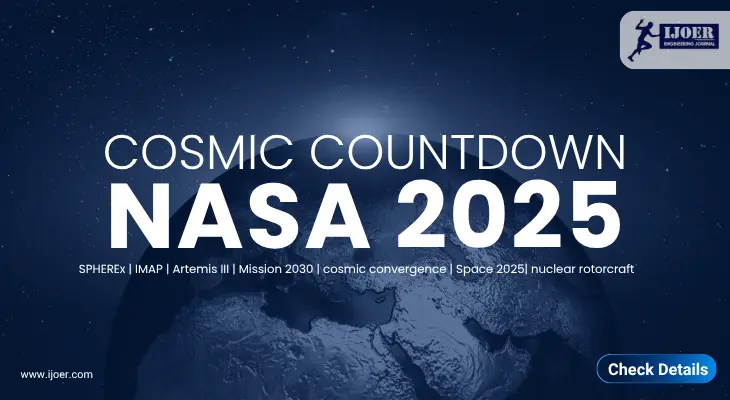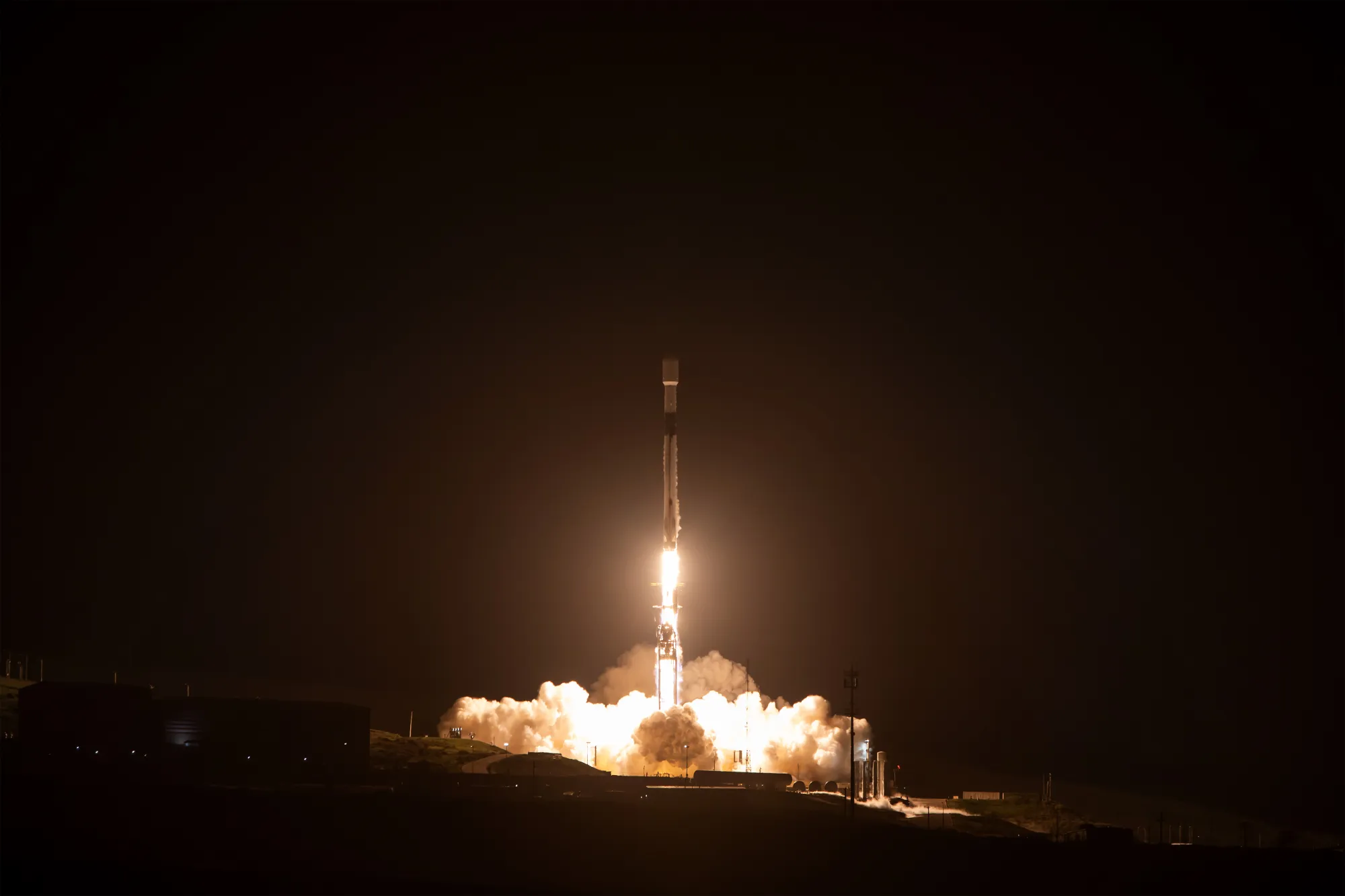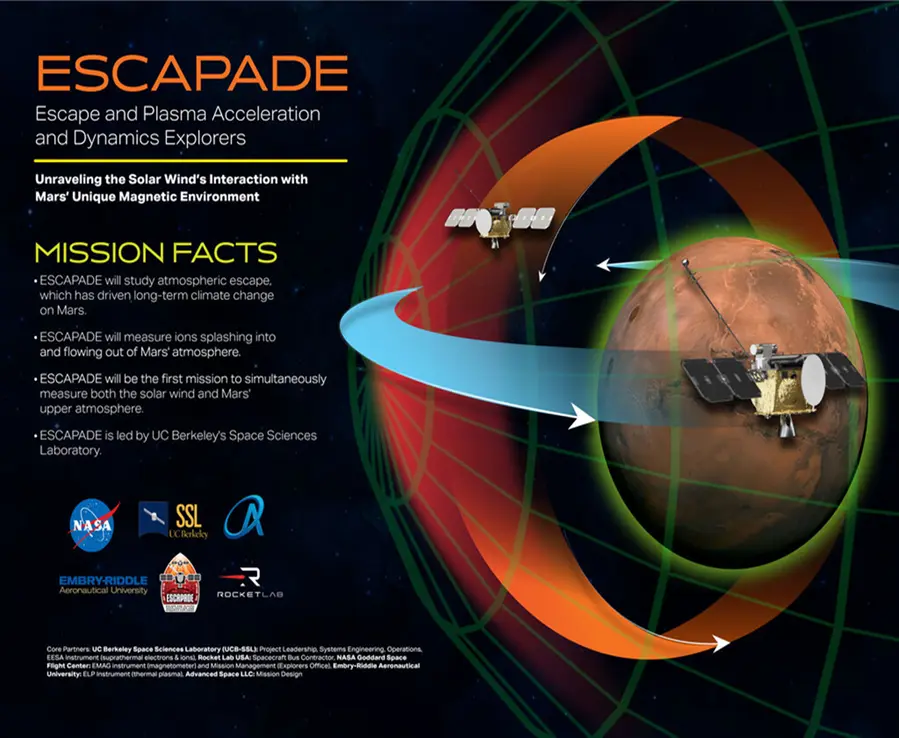
The year 2025 promises to be a crucial one for space science. To mark these words NASA is set to launch a series of missions that spans much more than expected be it astrophysics, lunar exploration, solar physics, planetary defense or climate monitoring. These are not only scientific in nature but also representing technological maturity and sustainable space exploration. With lunar launch missions like Artemis III, deep-space observatories like SPHEREx and solar-monitoring missions such as IMAP, NASA's agenda is not only to increase its interdisciplinary efforts but inclusive of both robotic and human-led efforts.
NASA's strategic priorities for 2025 align with its broader vision under the Artemis Mission, emphasizing a peaceful and collaborative human return to the Moon and preparation for Mars. Artemis III is expected to be the first crewed lunar landing after Apollo 17 and will also demonstrate next-generation spacesuits, advanced lander designs and surface science capabilities. Alongside this, the Lunar Gateway is too developing for deep space travel. These initiatives illustrate a future where interplanetary travel, sustainability of Earth and commercial innovation amalgamate in a shared ecosystem.
SPHEREx (Spectro-Photometer for the History of the Universe, Epoch of Reionization, and Ices Explorer), launched on 11 March 2025 will be doing an unprecedented sky survey in near-infrared light after every six months. It will provide the agency with critical data on cosmic inflation, the formation of galaxies, and the presence of water and other complex compounds in planetary nurseries. This mission will help in bridging the gap between exoplanet research and cosmology.
SPHEREx launched on 11 March 2025.

Source: https://www.nasa.gov/news-release/nasa-launches-missions-to-study-sun-universes-beginning
The Lunar Trailblazer orbiter and NASA’s Commercial Lunar Payload Services (CLPS) are merged to provide high-resolution thermal data for surface water ice. Alongside landers from Astrobotic, Firefly Aerospace are delivering in-situ resource utilisation experiments and automated systems for multiple lunar regions. These missions are necessary for technology validation supporting long-term human presence on the Moon.
The ESCAPADE mission is a dual-spacecraft initiative for Mars that will deeply study the Martian magnetosphere, the region where Mars’s atmosphere and charged particles interact with solar wind, further adding to the understanding of atmospheric loss and radiation exposure for future astronauts.

Source: https://svs.gsfc.nasa.gov/
IMAP (Interstellar Mapping and Acceleration Probe), will launch in late 2025 to survey the boundary where the solar wind meets the stellar interstice, providing data for cosmic ray propagation and heliospheric shielding.
The X-59 QueSST (Quiet Supersonic Technology) is an aircraft developed by NASA and Lockheed Martin which reduces sonic booms to a very soft sound, enabling supersonic travel over land. This year its first test flights are scheduled and the results will be shared with the FAA and ICAO. At same time, NASA is also advancing AI technologies in satellites for earth observations such as Earth Observing Nanosat fleets. These AI powered systems will detect, prioritize and transmit data automatically for extreme disaster be it weather, wildfires or volcanic eruptions. These systems will enhance the disaster response.
The Nancy Grace Roman Space Telescope will give a deep analysis of the universe after launch in 2027, for studying about dark energy and exoplanets. Instruments like microlensing and coronagraph will produce hundreds times larger datasets. The Roman Telescope will help scientists to track changes in the universe over time, and even uncover mysterious exoplanets wandering in space.
The Near-Earth Object (NEO) Surveyor will operate in solar orbit between earth and sun, and aims to identify near-Earth objects not smaller than 140m including space rocks that cannot be seen even from telescopes due to daylight. It is essential in planetary defense and also fulfills mandates under George E. Brown, Jr. Near-Earth Object Survey Act.
Dragonfly is a nuclear rotorcraft launching in 2028 for exploration of Titan’s surface hooping across diverse terrains including dunes, cryovolcanoes, and hydrocarbon lakes. Titan’s thick atmosphere and complex chemistry gives scientists a natural lab for prebiotic experiments. It will offer insights upon life beyond earth with the mobile platform sampling organics and testing conditions for life.
NASA, in collaboration with DARPA and the U.S. Department of Energy, is developing nuclear thermal propulsion (NTP) for faster interplanetary missions. The DRACO demo is scheduled for late 2026 or early 2027 and it will test the capability in orbit. The Lunar Gateway developing with Habitation and Logistics Outpost (HALO) and Power and Propulsion Element (PPE) modules will be a possible medium for Mars and scientific expeditions.
NASA’s portfolio includes missions jointly developed with ISRO such as NISAR using L- and S-band synthetic radar to monitor Earth's cryosphere and tectonics changes. Meanwhile, (PUNCH) Polarimeter to Unify the Corona and Heliosphere gives information for space weather with solar wind evolution. Other projects developed jointly with the UK space agency includes Pandora and Twinkle for authentic atmospheric data on exoplanets and search for biosignatures.
NASA’s open science model encouraged collaborations along with data transparency. It is a driving force behind missions like Artemis, NISAR (with ISRO) and Lunar Gateway. NASA’s Science Data Archives also opens access to the datasets to empower academic researchers and scientists about frontier science.
To sustain the scientific field, NASA is also investing in the education field with programs like Future Investigators in NASA Earth and Space Science and Technology (FINESST), the Artemis student challenges and on analog sites too which are led by different universities including CHAPEA Mars simulation habitat. NASA ensures consistency to achieve excellence in the field of space sciences and engineering while supporting early career researchers.
NASA’s 2030 vision is a testament to the integration of science, exploration, and global collaboration. Its initiatives are redefining how we interact with the universe. As NASA taking a step towards sustainable lunar presence and crewed missions to Mars, each step taken is further shaping future understanding of the cosmos for scientists and educators.
Q1: Why is 2025 considered a significant year for NASA research?
Multiple flagship and experimental missions are scheduled for launch including SPHEREx, IMAP, and CLPS. These will enhance our understanding of the universe, Earth systems, and sustainable exploration frameworks.
Q2: Is NASA developing something to detect and prevent cosmic threats?
NASA will be launching the NEO Surveyor telescope in 2027 to identify potentially hazardous near-Earth objects using infrared sensors.
Q3: What is George E. Brown, Jr. Near-Earth Object Survey Act.?
The act is a U.S. legislative directive aimed at detecting and cataloging potentially hazardous near-Earth objects (NEOs).
Q4: What is the significance of the X-59 QueSST project?
It aims to demonstrate quiet supersonic flight, potentially reshaping future air travel policies and aerospace engineering.
Q5: What is Stellar interstice?
It is the matter and energy that exists in the space between stars within a galaxy.

|
Citation Indices
|
All
|
Since 2020
|
Citation |
2359 |
1680 |
h-index |
19 |
15 |
i10-index |
57 |
24 |
|
Acceptance Rate (By Year)
|
|
|
Year
|
Percentage
|
|
2023
|
9.64%
|
|
2027
|
17.64%
|
|
2022
|
13.14%
|
|
2021
|
14.26%
|
|
2020
|
11.8%
|
|
2019
|
16.3%
|
|
2018
|
18.65%
|
|
2017
|
15.9%
|
|
2016
|
20.9%
|
|
2015
|
22.5%
|